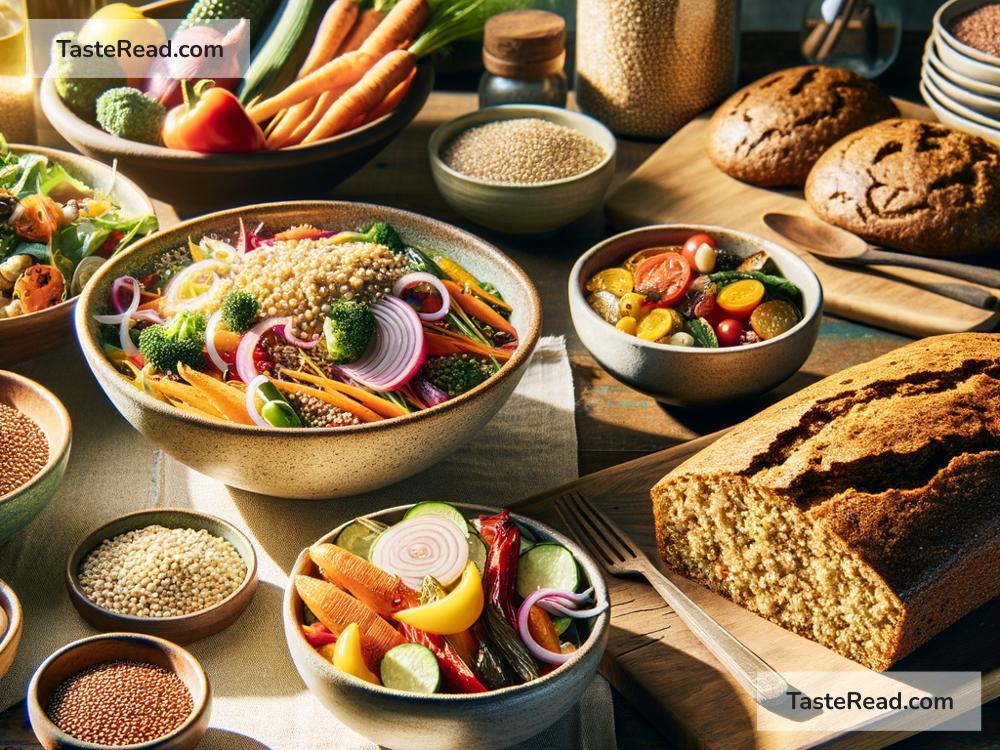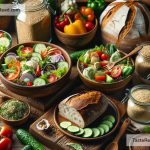How to Incorporate Regenerative Crops into Sustainable Meal Plans
Are you on the lookout for ways to eat healthier while also taking care of our beautiful planet? You’ve probably heard of organic, farm-to-table, and maybe even the zero-waste lifestyle. But let’s dive into something a little less mainstream, yet incredibly impactful: regenerative agriculture and how we can support it through incorporating regenerative crops into our meals. It’s simpler than you think, and I promise, your taste buds and Mother Earth will thank you!
What Are Regenerative Crops?
First things first, regenerative agriculture is a farming practice designed to heal the earth. It focuses on improving soil health, conserving water, and drawing carbon back into the earth. This sustainable approach helps combat climate change and promotes biodiversity. Crops grown this way are called regenerative crops. They’re not just ‘good for the earth’; they’re packed with nutrients, making them fantastic for our health too.
Why Should You Care?
Eating foods from regenerative farming can make a huge difference. It’s a way to directly support farming practices that heal the land, increase biodiversity, and combat climate change. Plus, choosing these foods often means you’re opting for fresher, more nutrient-rich options. It’s a win-win for you and the planet!
So, How Can You Incorporate Them into Your Meals?
Let’s break it down into simple, actionable steps:
1. Start Small but Think Big
Begin with one meal a week based entirely on regenerative crops. Look for seasonal vegetables, fruits, grains, and even meats from farms practicing regenerative agriculture. Farmers’ markets or local food co-ops are great places to start asking around.
2. Learn the Seasons
Eating seasonally is synonymous with eating regeneratively. By aligning your diet with the natural growing cycles, you support the land’s rest periods and enjoy produce when it’s naturally meant to be harvested. Each season brings its own variety, so you’ll never get bored.
3. Diversify Your Plate
Regenerative farming encourages biodiversity, so why not replicate that on your plate? Trying different kinds of vegetables, grains, and proteins not only enhances your diet but supports various farming practices essential to regenerative agriculture. Ever heard of amaranth or sorghum? Now might be a good time to give them a go!
4. Reduce Waste
Part of supporting regenerative practices is minimizing waste. Use every part of the vegetable, save scraps for compost, and plan your meals to ensure you’re using what you buy. Embrace the beauty of root-to-stem cooking; it’s both environmentally friendly and creatively challenging.
5. Connect with Your Food
Understanding where your food comes from bridges the gap between farm and plate. Visit local farms, talk to farmers, or even participate in a community-supported agriculture (CSA) program. This connection not only fosters appreciation but also strengthens the community around sustainable farming.
6. Educate and Share
The more people know about regenerative agriculture, the bigger its impact can be. Share your journey, the meals you create, and what you learn with your friends and family. Education is the seed from which change grows.
Regenerative Recipe Ideas to Get You Started
Here are a couple of simple ideas to incorporate regenerative crops into your meals:
- Seasonal Veggie Stir-fry: Grab whatever’s in season—squash, peppers, leafy greens—and toss them up with some garlic and your favorite spices.
- Local Grain Bowls: Start with a base of regenerative grains like quinoa or farro, top with a mix of raw or roasted veggies, add a protein source, and finish with a drizzle of dressing. The combinations are endless!
Eating sustainably doesn’t have to be a chore or a bore. It’s an exciting adventure that benefits both our health and the planet. By incorporating regenerative crops into your meal planning, you take a significant step towards a sustainable lifestyle. Remember, every meal is an opportunity to make a choice. Choose regenerative, and let’s heal our planet one bite at a time.
Happy cooking, and here’s to a healthier planet and a healthier you!


